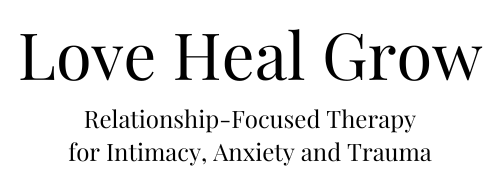
Relationships are a fundamental part of human life, providing emotional support, companionship, and a sense of belonging. However, the dynamics of relationships can vary significantly, with some being healthier and more balanced than others. Two common types of relationship dynamics are codependent and interdependent relationships. Understanding the differences between these two can help individuals foster healthier, more fulfilling connections.
But what does it mean to be codependent? How can we spot this trait in our relationships? Today, let’s explore the definitions, characteristics, and examples of codependent and interdependent relationships and figure out whether it is possible to transition from a codependent to an interdependent relationship.
What Is Codependency?
Codependency is a relationship dynamic where one person sacrifices their own needs to meet the needs of another person. In such relationships, one partner often becomes overly reliant on the other for their sense of self-worth and identity. Codependent relationships are marked by an imbalance where one person’s emotional and physical needs are consistently prioritized over the other’s.
Common characteristics of codependent relationships include:
- Excessive Caretaking:One partner takes on the role of caregiver, often neglecting their own needs.
- Low Self-Esteem: The codependent partner may have a poor sense of self-worth and derive their value from being needed by the other person.
- Lack of Boundaries: Boundaries are often blurred or nonexistent, leading to enmeshment and a loss of individuality.
- Fear of Abandonment: The codependent partner may have an intense fear of being abandoned or rejected, which drives their behavior.
Examples of Codependent Relationships
On their own, the traits of a codependent relationship might not indicate a problem with the relationship itself. For example, if one partner gets sick, it’s normal and healthy for the other partner to assume the role of caretaker temporarily. But sometimes these dynamics can move into a less-functional territory. Here are some examples of what that can look like.
Caregiver and Dependent
In a classic codependent relationship, one partner assumes the role of caregiver, constantly attending to the needs of the other, who may be struggling with issues such as addiction, mental health problems, or chronic illness. The caregiver sacrifices their own well-being to take care of the dependent partner, often at the expense of their own mental and physical health. While you can care for your partner when they struggle without it being a codependency situation, when you disappear into the caretaker role and constantly put your needs second, that’s a problem.
Emotional Dependency
In another example, one partner may become emotionally dependent on the other, seeking constant reassurance and validation. The dependent partner may struggle with low self-esteem and feel unable to function without the constant support of their partner, leading to an imbalance in the relationship.
What Is Interdependence?
Interdependence is a healthier relationship dynamic where both partners maintain their individuality while being emotionally connected and supportive of each other. In interdependent relationships, each person recognizes their own value and the value of their partner, fostering a balanced and mutually beneficial connection.
Common characteristics of interdependent relationships include:
- Mutual Support: Both partners provide emotional and practical support to each other, fostering a sense of teamwork.
- Healthy Boundaries: Each person maintains their own identity and respects the boundaries of their partner.
- Self-Awareness: Both individuals have a strong sense of self and do not rely on the relationship for their self-worth.
- Open Communication: Partners communicate openly and honestly, addressing issues and needs without fear of judgment.
Examples of Interdependent Relationships
Sometimes looking at models can help us see how our relationships are going. Here are examples of elements of interdependence, not codependence.
Mutual Support and Growth
In an interdependent relationship, both partners support each other’s personal growth and development. For example, one partner may decide to pursue further education or a new career path, and the other partner provides encouragement and practical support, such as taking on additional household responsibilities or offering emotional support during challenging times.
Balanced Responsibilities
In another example, both partners share responsibilities and decision-making equally. They communicate openly about their needs and preferences, and work together to create a balanced and harmonious household. This mutual respect and cooperation foster a sense of partnership and equality.
Transitioning from Codependent to Interdependent Relationships
Changing a codependent relationship to an interdependent one is possible, but it requires effort and commitment from both partners. You have to want to change, and you have to want to work together. The good news is that with work, time, and willingness, you can help your relationship flourish in a way that’s healthy for both of you.
Self-Awareness and Reflection
The first step in changing a codependent relationship is to recognize and acknowledge the unhealthy patterns. Both partners need to reflect on their behaviors and understand how they contribute to the codependency. This self-awareness can be achieved through journaling, therapy, or honest conversations with each other.
Establish Healthy Boundaries
Setting and maintaining healthy boundaries is crucial for fostering interdependence. Each partner should identify their own needs and communicate them clearly to their partner. This may involve saying no to certain requests or taking time for oneself to recharge and maintain individuality.
Develop Self-Worth
Building self-esteem and self-worth independently of the relationship is essential for breaking the cycle of codependency. Both partners should engage in activities and hobbies that bring them joy and fulfillment.
Practice Open Communication
Open and honest communication is the foundation of interdependent relationships. Partners should practice active listening, express their feelings and needs without judgment, and work together to resolve conflicts. Regular check-ins can help ensure that both partners feel heard and valued.
Focus on Mutual Support
Shifting the focus from one-sided caretaking to mutual support is key to fostering interdependence. Both partners should strive to provide emotional and practical support to each other, recognizing that a healthy relationship is built on reciprocity and teamwork.
Celebrate Individuality
Embracing and celebrating each other’s individuality is essential for maintaining an interdependent relationship. Both partners should pursue their own interests, goals, and friendships, while also supporting each other’s pursuits. This balance between independence and connection strengthens the relationship and fosters personal growth.
Seeking Support
Understanding the difference between codependent and interdependent relationships is crucial for fostering healthy, fulfilling connections. Another important aspect of building a healthier relationship is seeking support. Therapy or counseling can provide valuable support and guidance in transitioning from a codependent to an interdependent relationship. A therapist can help both partners identify unhealthy patterns, develop new coping strategies, and build a stronger, healthier connection.
If you find yourself struggling with codependency or seeking to build a healthier, more interdependent relationship, consider seeking the guidance of a therapist. At Love Heal Grow, our experienced relationship therapists can help you navigate the complexities of your relationships and develop strategies for fostering healthier connections. Schedule an appointment today to start your journey toward a more fulfilling and balanced relationship. We’re here for you!






















